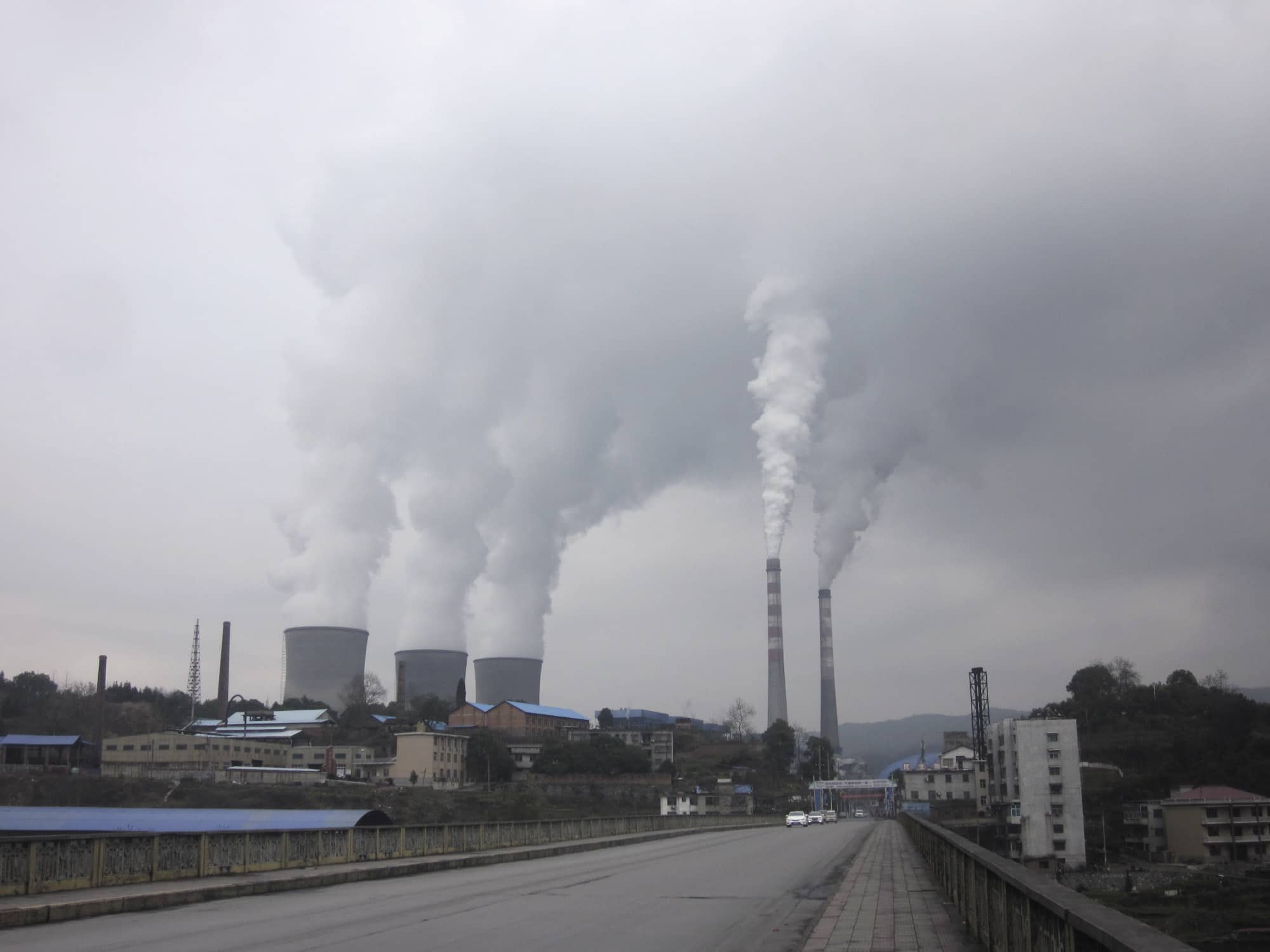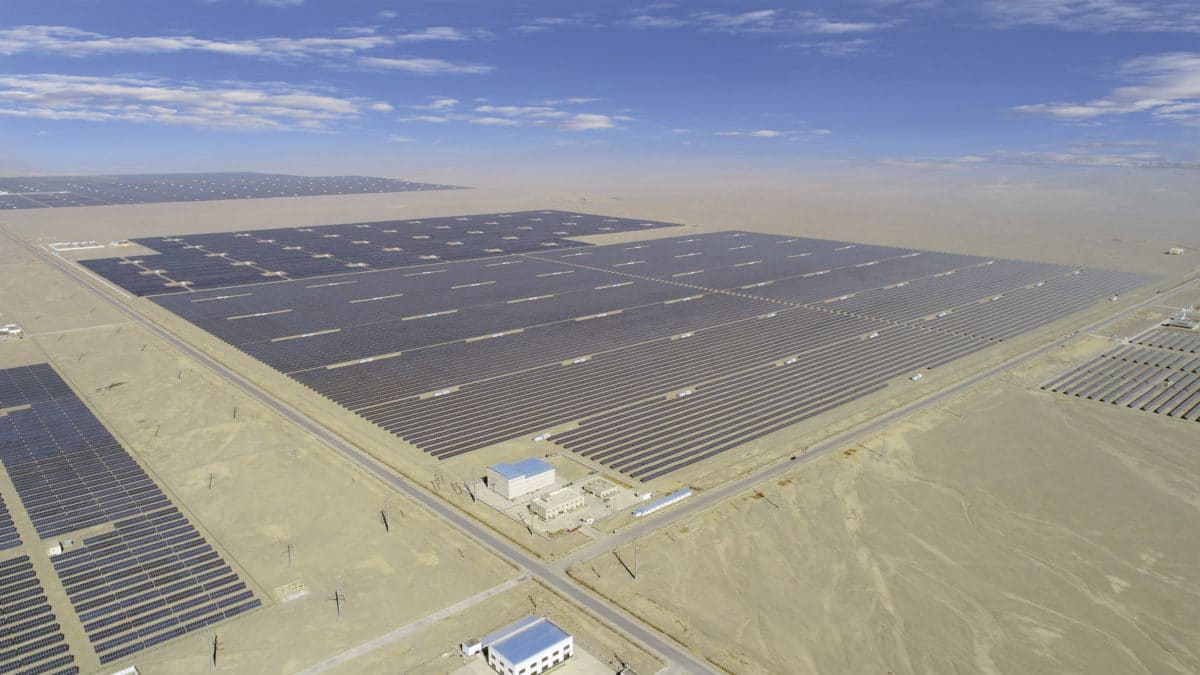From pv magazine 04/2021
The long-delayed introduction of a carbon market policy in China was finalized earlier this year. Initially, the market will cover up to 4.5 billion tons of CO2 emissions annually, coming from around 2,225 power companies which when combined account for around 30% of China’s carbon emissions. The Chinese carbon market is expected to be three times larger than the EU Emissions Trading System (ETS), on which it has been partly modeled.
However, anyone expecting the system to radically alter China’s energy mix anytime soon will be disappointed. It will take time for carbon prices to reach levels high enough to support the country’s energy transition. That said, it is plausible that some old and very inefficient coal-fired plants may be pushed off the grid earlier, as their owners might struggle with the cost of purchasing allowances in the market.
“So far prices are much too low to make a big impact. Allowances have been trading at around five to six dollars per ton. It’s a bit like in 2005 when carbon trading started in Europe,” Albert de Haan, China ETS adviser at business development firm IncubEx, told pv magazine. “But prices will move much higher over time as the supply of allowances tightens. Beijing will make sure that it does not repeat the mistakes of the EU, which allowed for too many allowances in the early phases.”
In the first phase of the system, power companies will have to report and verify emissions for 2019-20. This, along with carbon intensity benchmarks, will determine how many free allowances each company is allocated. The power companies will initially receive allowances at 70% of 2018 power output, multiplied by the benchmarks.
As in Europe, one allowance covers one ton of CO2 emissions. If a company emits more than the number of free allowances allocated to it, it will have to buy extra allowances in the open market. This may appear likely to place a considerable financial burden on polluters, but it is not really the case yet. For example, there is a 20% cap on emissions above the free allowances. This means that power companies only have to purchase allowances to cover 20% of their extra emissions.
One key difference from the EU ETS is that the Chinese system will initially use carbon intensity benchmarks instead of an overall cap on emissions, or so-called cap and trade. However, a cap on emissions is expected to be introduced at a later stage as the market rules tighten.
“We expect a number of areas to develop as the system is established and tested. This includes a gradual shift from free allocations of allowances to auctioning, the migration over time to a single benchmark, and a reduction in the supply of allowances,” explained Mervyn Tang, global head of ESG research, sustainable finance at Fitch Ratings.
The pace of the reforms would depend on factors such as the strength of the post-pandemic recovery and the evolution of the economics of renewables versus fossil fuels, as well as other energy sources, Tang added.
National targets
China has set a target of 1,200 GW of installed solar and wind capacity by 2030, up from around 250 GW of solar capacity and 280 GW of wind capacity at present. Renewables currently account for around 10% of the country’s total electricity generation, which is dwarfed by coal’s share of around 60%. However, the goal is for renewables to account for 25% of the power mix by 2030.
China aims to reach peak GHG emissions by 2030. With a growing economy and population, it has set a target to reduce CO2 emissions per unit of GDP by 18% by 2025, compared with 2020 levels. The overarching target is carbon neutrality by 2060. More details on the interim 2025 targets are expected later this year.
It is worth noting that China’s 14th five-year plan, presented in early March, mentioned the ETS; this is the first time it has been mentioned in this key government plan. This illustrates that Beijing sees the system as a key component to support its decarbonization plans.
The national ETS will ultimately cover other sectors beyond power, including petrochemicals, steel, nonferrous metals, paper and domestic aviation. Transport, agriculture and construction are still excluded from the scheme.
“China ETS aims to cover industry and power sectors by 2025, which is 80% of China’s yearly emissions. To achieve emissions peak before 2030, the power and industry sectors need to reduce emissions soon,” Yan Qin, lead carbon analyst at Refinitiv, told pv magazine.
Qin agrees, however, that it will take time for prices to have a meaningful impact on the power generation mix. “The benchmarks are generous so prices will likely stay low compared with the EU to begin with and they will only lead to tiny extra carbon costs for coal plants,” she said.
One key question is how quickly market rules will be tightened in order to boost prices and incentivize further investment in solar PV and other clean technologies. In Europe, carbon prices were in the doldrums for many years due to a huge surplus of allowances. However, regulatory intervention by the EU – supported by key member states such as France and Germany – led to a tighter cap on the supply of allowances, as well as the introduction of a Market Stability Reserve to absorb many excess allowances in the market. The revamp of the system led to prices rising from lows of less than €4/ton, to their current level of almost ten times that.
If China is serious about peaking emissions by 2030 carbon prices under the national ETS will have to start biting soon.
Tang noted that the 2020 China Carbon Pricing Survey points to an average estimated carbon price of CNY 71/ton ($11/ton) by 2025 and CNY 93/ton ($14/t) by 2030. This is similar to the average carbon price seen in the Chinese government’s 2019 regional pilot scheme, but higher than in other regional schemes.

More renewables
Tang said he expected a shift from coal to renewable energy – as well as nuclear and gas – over the next few decades, as China aims to meet its emissions reduction targets and net-zero pledge.
“The improving economics of renewables is already making it increasingly viable even as subsidies are withdrawn, and this will likely continue in the future as technology develops,” he said. “We expect the availability of allowances will be adjusted with an eye on these technological developments, adjusted as part of China’s overall strategy to meet its environmental objectives.”
Compliance and sound governance will also be key to fostering trust in the system. The Ministry of Environment and Ecology, formed in 2018, is the scheme’s main regulator. Penalties for non-compliance appear low – less than $5,000 in most cases. However, companies also risk a lower allocation of free allowances if they fail to comply, according to Fitch.
“The regional pilot schemes took longer than expected because there was a fair amount of non-compliance from power plant operators in rural areas. But there is more control now, compliance improved as penalties were handed out,” explained de Haan.
The ETS scheme will allow entities to use China Certified Emissions Reduction (CCER) credits to offset up to 5% of verified emissions. Eligible CCER projects include renewable electricity projects such as solar PV. However, specific rules and details on offsetting have yet to be published.
Nevertheless, the Chinese government’s bet on carbon trading signals that an increasing number of major economies are opting for market-based solutions to curb GHG emissions and foster investments in renewable energy. This is also evident elsewhere in Asia. South Korea, for example, introduced a national ETS in 2015. The system covers both the power sector and industry.
In 2020, carbon prices rose above KRW 40,000 ($35.30) per ton. But these prices fell sharply again after government data showed the market was oversupplied. South Korea targets 24.4% GHG emissions reductions by 2030, compared with 2017 levels, and carbon neutrality by 2050. Japan has no national carbon market, but operates two regional markets which are linked: Tokyo and Saitama ETS.
Linking markets
Linking between the Chinese ETS and other Asian carbon markets may seem a long shot for now, but it should not be ruled out in the longer term. Linking between markets could lower the cost of emissions reductions, improve market liquidity, and encourage more nations to join, as pointed out in a recent research paper by the Norway-based Fridtjof Nansen Institute.
Some observers even believe China’s carbon market will link up with the EU ETS one day and that a global price on carbon is the way forward. Indeed, a high-level EU-China ETS group has been set up to foster collaboration and knowledge sharing.
China faces massive challenges to align economic growth with its decarbonization path by switching to cleaner energy in electricity generation, industry and transport. The ETS should support the energy transition over time, but it will not solve all the problems alone.
As there are no national auctions of allowances yet, provincial governments will be responsible for calculating and distributing permits to polluters based on the rules set out by the ministry. Online trading of allowances is expected to begin in June 2021.
“Things are happening incredibly fast in China, they are not sitting on the fence. They will need to radically change their power production mix in order to reach the carbon neutrality target by 2060 – and they will do it,” said de Haan.
This content is protected by copyright and may not be reused. If you want to cooperate with us and would like to reuse some of our content, please contact: editors@pv-magazine.com.



By submitting this form you agree to pv magazine using your data for the purposes of publishing your comment.
Your personal data will only be disclosed or otherwise transmitted to third parties for the purposes of spam filtering or if this is necessary for technical maintenance of the website. Any other transfer to third parties will not take place unless this is justified on the basis of applicable data protection regulations or if pv magazine is legally obliged to do so.
You may revoke this consent at any time with effect for the future, in which case your personal data will be deleted immediately. Otherwise, your data will be deleted if pv magazine has processed your request or the purpose of data storage is fulfilled.
Further information on data privacy can be found in our Data Protection Policy.